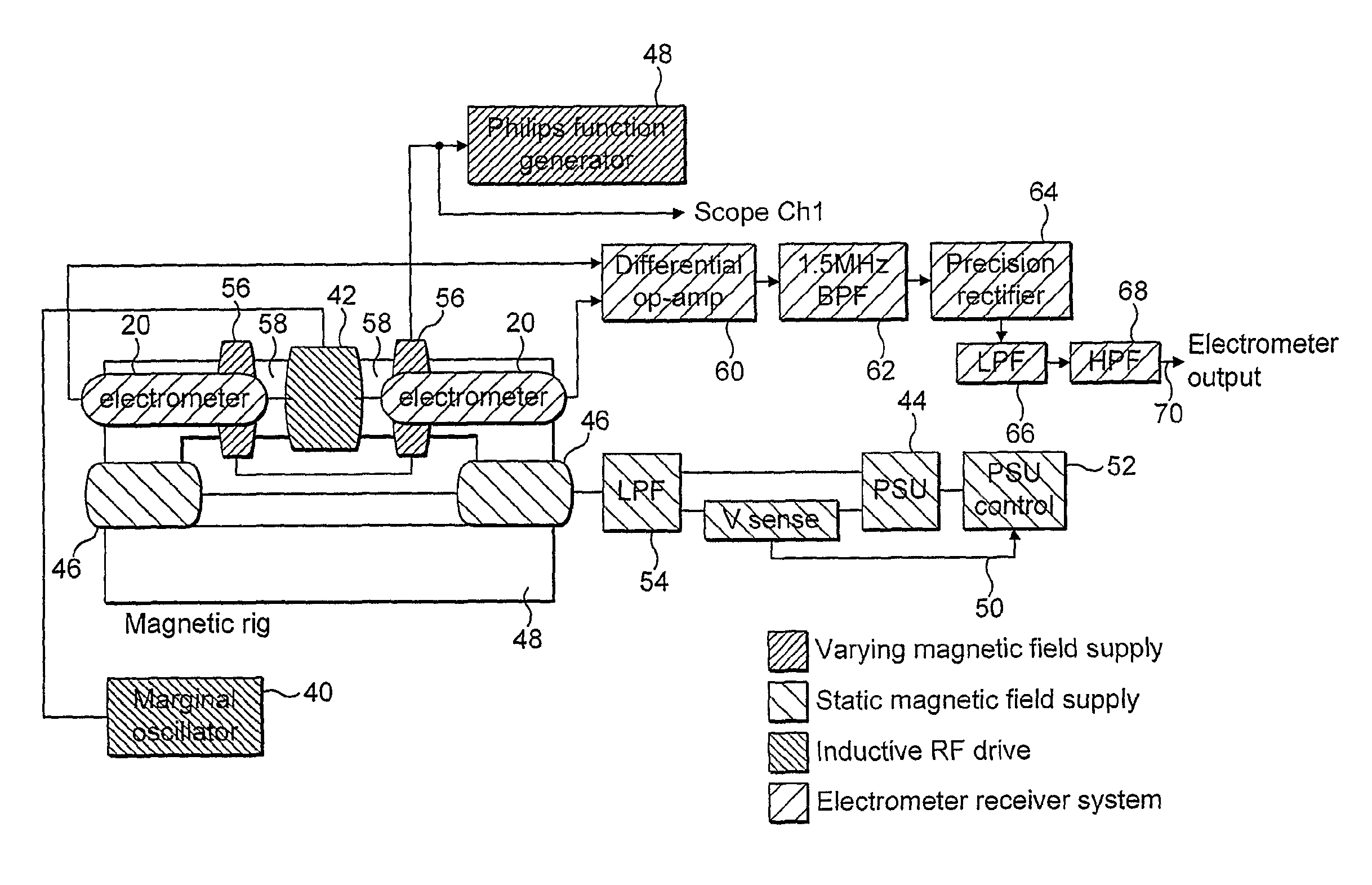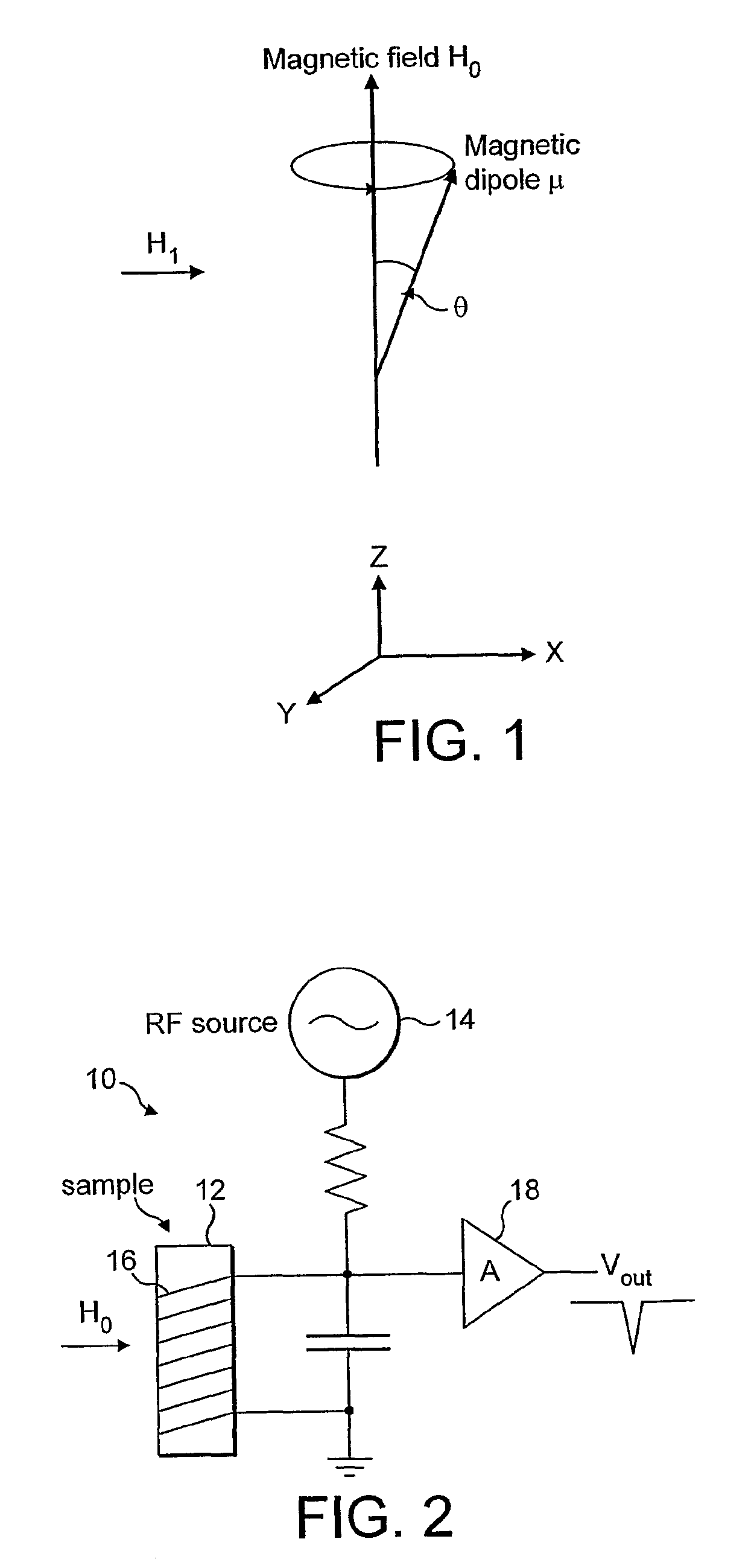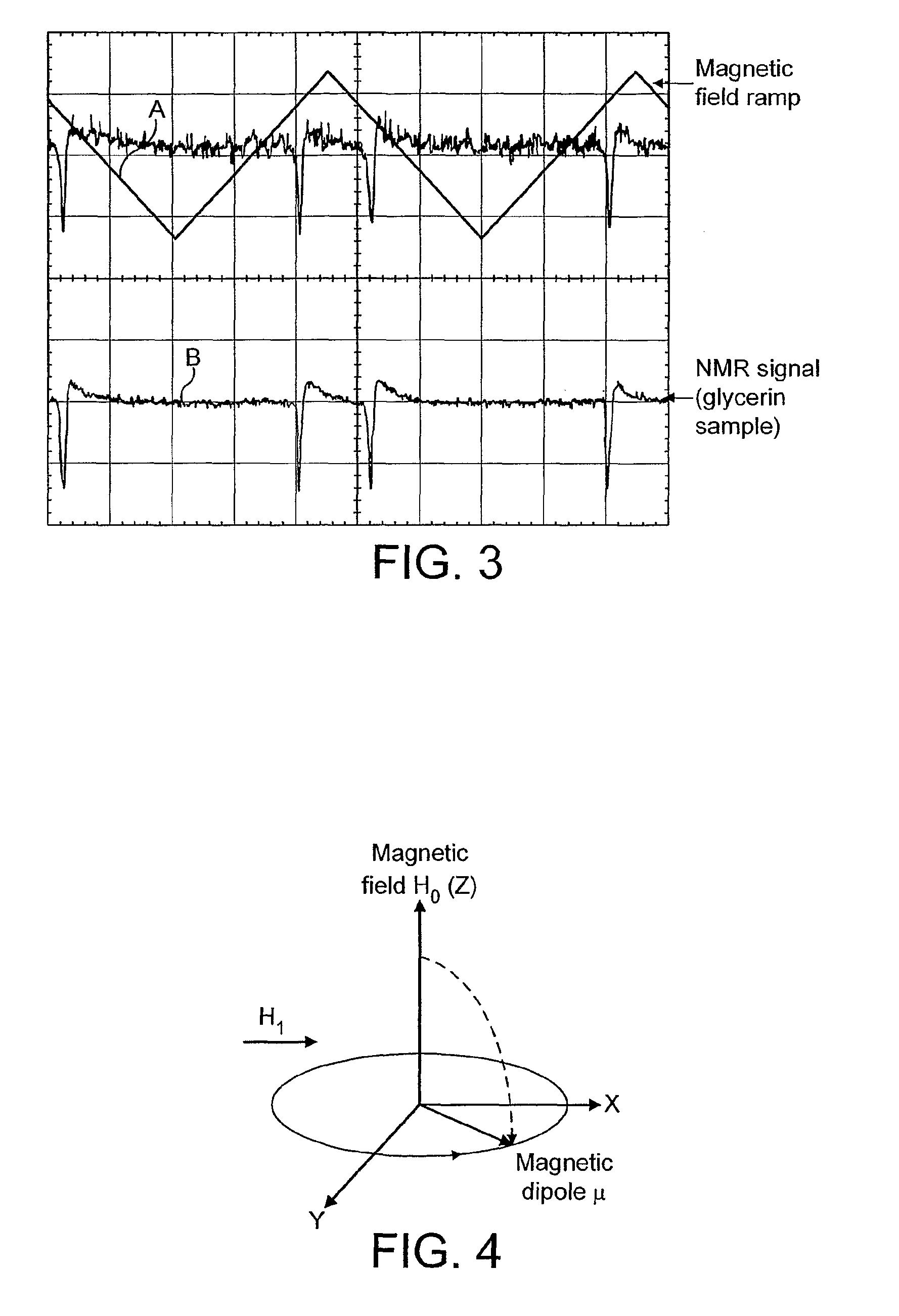Electric potential sensor for use in the detection of nuclear magnetic resonance signals
a nuclear magnetic resonance and potential sensor technology, applied in the field of electric potential sensors, can solve the problems of system recovery from overload, physical and electronic constraints, and unnecessary introduction of constraints on the system performance,
- Summary
- Abstract
- Description
- Claims
- Application Information
AI Technical Summary
Benefits of technology
Problems solved by technology
Method used
Image
Examples
Embodiment Construction
Theory of the Use of Electric Potential Sensors
[0047]The present invention proposes to employ an electric field sensor in place of the known inductive sensor arrangement of FIG. 2 for signal detection in NMR apparatus.
[0048]The principle of operation for electric field detection of NMR signals is to utilise the electric field (E) associated with the precessing magnetic field (B) of the nuclear spins. From the theory of electromagnetism for the far field approximation of a dipole, it is known that:
|E|=c|B|
where c is the velocity of light. According to the present invention, an electric field sensor is provided for coupling, via a capacitive mechanism, to a sample in order to acquire the NMR signal.
[0049]The electric field vector (E) is perpendicular to the magnetic field component (B) and rotating at the Larmor precession frequency. Formally, the two components are related by a Maxwell equation:
Curl E=−δB / δt
[0050]This provides the information needed to position an electrode arrangem...
PUM
 Login to View More
Login to View More Abstract
Description
Claims
Application Information
 Login to View More
Login to View More - R&D
- Intellectual Property
- Life Sciences
- Materials
- Tech Scout
- Unparalleled Data Quality
- Higher Quality Content
- 60% Fewer Hallucinations
Browse by: Latest US Patents, China's latest patents, Technical Efficacy Thesaurus, Application Domain, Technology Topic, Popular Technical Reports.
© 2025 PatSnap. All rights reserved.Legal|Privacy policy|Modern Slavery Act Transparency Statement|Sitemap|About US| Contact US: help@patsnap.com



